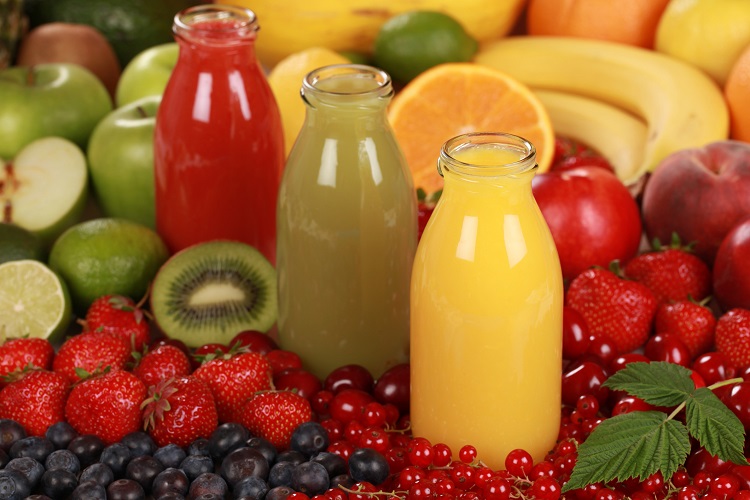
Fruit juices can be consumed at any time of the day, by people of all ages. Should this multi-purpose beverage be consumed in moderation? And if so, what will be the consequences for beverage producers?
Drinking sugary drinks, such as fruit juice, during childhood and adolescence may increase the risk of type 2 diabetes, according to a new study presented at the American Heart Association's Epidemiology and Prevention, and Lifestyle and Cardiometabolic Health scientific sessions. This impact appears to be greater in boys.
What is the link between fruit juice and diabetes?
A long-term study in 455 children found that drinking 100% % juice during childhood or adolescence was associated with an increased risk of type 2 diabetes.
While preliminary, these findings support existing evidence regarding the possible relationship between sugar-sweetened beverages and long-term risks of type 2 diabetes in children, said Dr. Soren Hardnois-Leblanc, a registered dietitian and lead researcher on the study. When discussing healthy eating, pediatricians and other health care professionals should warn young patients about the dangers of sugary drinks and fruit juices.
The researchers examined whether consumption of fruit and 100% fruit juice was associated with three markers of type 2 diabetes. Based on the dietary record, they calculated the average consumption of 100% fruit juice and sugary drinks during childhood and early adolescence. They then assessed potential associations between insulin resistance, HbA1c, and fasting blood glucose levels. The markers were assessed by a blood test in late adolescents.
The researchers found that boys who drank 100 % pure fruit juice during childhood and early adolescence had an increase in HbA1c levels of 0.07 % by late adolescence. This resulted in only a 0.02 % increase in HbA1c levels in boys. This study involved 240 boys and 215 girls.
Harnois Leblanc said, “I expected that while there are biological and behavioral differences between girls and boys, the association between fruit juice and sugary drinks and insulin resistance and blood sugar in girls in late adolescence, as well as HbA1c, would also be found.” The next step is to use more sophisticated statistical methods to help us better understand sugary drinks, fruit juices, and their potential role in insulin resistance. We will also look at differences between children based on race or ethnicity.
What is Project Viva?
Project Viva was founded by Dr Matthew W Gillman in 1999. It is a research project that follows women over time. Project Viva's initial goal was to discover ways to improve the health of mothers and children by examining the effects of a mother's diet during pregnancy. The project has expanded its scope to include factors such as physical activity, mental health, stress and air pollution.

The study's results are very strong. However, while it found an association between regular consumption of fruit juice and sugary drinks and markers of type 2 diabetes, the researchers were unable to prove that these drinks actually caused the disease. The relatively small number of participants in the study may also have had an impact on the strength found.
Harnois Leblanc said that "diet, cardiometabolic and metabolic health are complex. Many factors change over time and interact in different ways. This study represents a small piece of the puzzle."
What impact will these results have on the sale of fruit juice?
The study's findings are interesting, especially when it comes to gender. However, they are unlikely to have an impact on fruit drink sales. The sugar content of fruit juices is well known to consumers and has not had an impact on sales for years. Statista estimated the fruit juice industry at $123.7 billion, but that figure is expected to increase to $150.8 by 2028. That's an increase of $27.1 billion in just four years.
Quality matters, and the consumer has started to shift towards premium fruit juices in different flavors.
A spokesperson for market intelligence firm Mordor Intelligence said the European juice industry is seeing a boom in demand for organic chilled variants. This trend is driven by consumers’ growing preference for natural foods. Consumers are more informed and can differentiate between products based on factors such as climate, premiumisation and changing lifestyles.
As demand for juice increases, juice manufacturers must be aware of changing consumer preferences and habits.
The increasing pace of fast-paced lifestyles presents a great opportunity for on-the-go juice consumption. Mordor Intelligence spokesperson said that health-conscious and ethically-minded consumers are gravitating towards 100% fruit juice formats, with a value share of 62.56% in 2023.
Fruit juice producers face challenges
Fruit juice producers also face other challenges, such as economic and geopolitical instabilities. Profitable production.
Orange juice suppliers are also facing challenges due to problems in two of the largest orange juice exporting countries: the United States and Brazil. A hurricane hit Florida in 2022, causing damage to the crop. Brazil was also hit by droughts during the summer, and recently. Floods are a major cause of disasterThe greening of citrus fruits has exacerbated supply problems in both countries.

